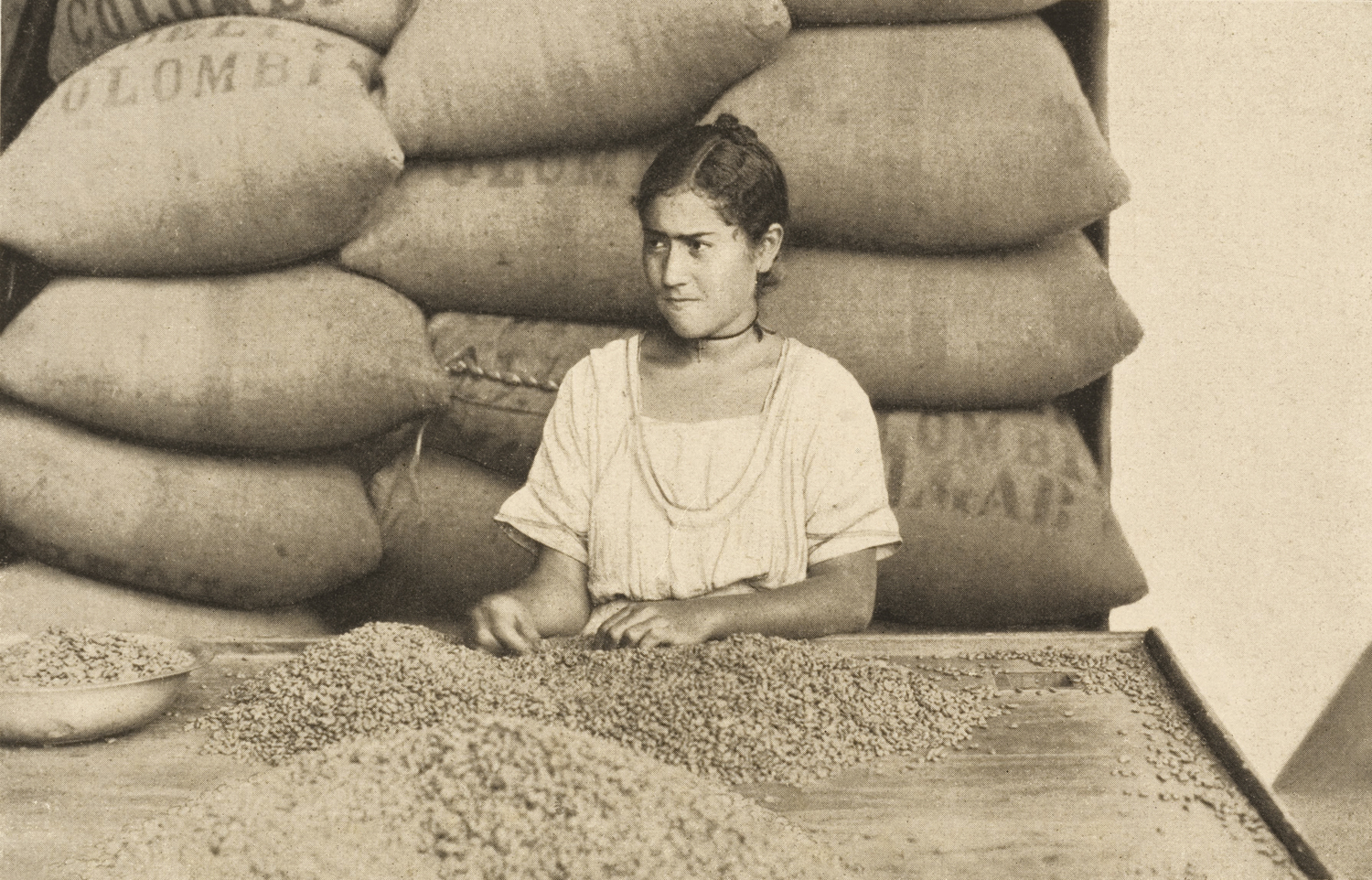TLDR? Colombian coffee consists mainly of Arabica beans, which are grown in the country’s cool mountainous regions.
Colombia is the second largest coffee producer in South America. The only country to beat them is Brazil. However, Colombia surpasses Brazil in its production of high-quality coffee beans.
Overall, my perspective of Colombia’s coffee production was one that valued quality over quantity. In other words, even though they rank third in worldwide production and second in South America, their coffee is higher quality.
But, there’s a lot more nuance to the coffee trade than just that. Let’s see where this coffee is grown and what varieties you can find in this nation.
The History of Coffee in Colombia

Much to my surprise, coffee is not native to South America! I was led to believe that coffee was a native drink of South America, much like their traditional cacao drink.
How and when coffee came to Colombia is somewhat debated among historians. What we do know is that it was brought here from Africa.
One of the reasons why coffee does so well in Colombia is thanks to the weather. Despite people associating coffee with tropical climates, it actually fares better in cooler climates. One of the primary reasons it can’t be grown in North America is due to the frigid winters, which would kill the plants.
Generally speaking, coffee plants like consistency. They prefer cool temperatures without extreme cold or heat.
While not everywhere in Colombia is a coffee zone, the cool mountain ranges and mild seasons mean that coffee grows well in certain parts of the country.
How Coffee Made It to Colombia

Dutch explorers and tradesmen were the first Europeans to bring the bean to South America.
It is believed that the coffee bean was first cultivated in Colombia during the late 1600s to early 1700s.
The rumor is that Jesuit priests (who loved the stuff) brought this drink to the country first. There’s no way to say for sure, but the Dutch definitely started the coffee trade between the old and new worlds.
Varieties and Regions for Coffee Growth in Colombia
:max_bytes(150000):strip_icc()/GettyImages-1174305372-718fb182f53b4714bd0789d8a312d66f.jpg)
Over 90% of all coffee grown in Colombia is Arabica. And, most Robusta that is grown in Colombia never leaves the country.
Regardless of which type of coffee you want to purchase, you’ll find them grown in a few specific parts of the country:
- Eastern Regions: Arauca, Casanare, Meta, and Caquetá
- Central Regiones: South of Antioquia, Boyacá, Caldas, Chocó, Risaralda, Quindío, Cundinamarca, and North of Tolima
- Southern Regions: Valle del Cauca, Nariño, Cauca, and Huila
- Northern Regions: Santander, Norte de Santander, La Guajira, Magdalena, and Cesar
Each region has a very different climate and growing conditions. This makes each type valued and desired for different flavor notes and intensity.
The eastern regions are located closer to the Gulf of Mexico and tend to get high amounts of rainfall. This region also battled high levels of poverty and social instability, making the growth of coffee somewhat complicated. In recent years, however, it has become a top producing region in Colombia.
The largest producers of coffee come from the Central and northern regions of Colombia. This is where Medellin is nestled, and it is also known to produce some of the highest quality coffee in the country.
These regions tend to have lower rainfall and cooler temperatures. This is ideal for high-quality, smooth, and citrus-flavored coffees. The three most popular coffees from this region come from Nariño, Cauca, and Huila blends.
Colombian Coffee vs American Coffee

North American coffee is largely sourced and grown in South America. But, the quality of coffee consumed by most in America is predominantly moderate quality.
Colombian coffee must compete in a global market. This means farmers are incentivized to grow coffee that’s affordable and tastes familiar. Highly priced coffee does not have the same mass market appeal as lower-quality coffee, unfortunately.
The good news is that you can try this high-quality coffee at many cafes and local shops throughout Medellin! And, you will be right in the heart of the coffee-producing region of the nation!
Take a Sip of Colombian Coffee
Even though Colombian coffee might not be native to the country, it’s certainly one of the best growing plants in the area today. And, as a result, it’s something you don’t want to miss while visiting Medellín!
Be sure to pick up a good bag of beans or head down to the nearest coffee shop to enjoy these tasty brews.
If you like this blog, you might like the Casacol Instagram page to keep up with all the new articles. Anything we need to update or correct? Care to contribute? Email us at blog@casacol.co.







